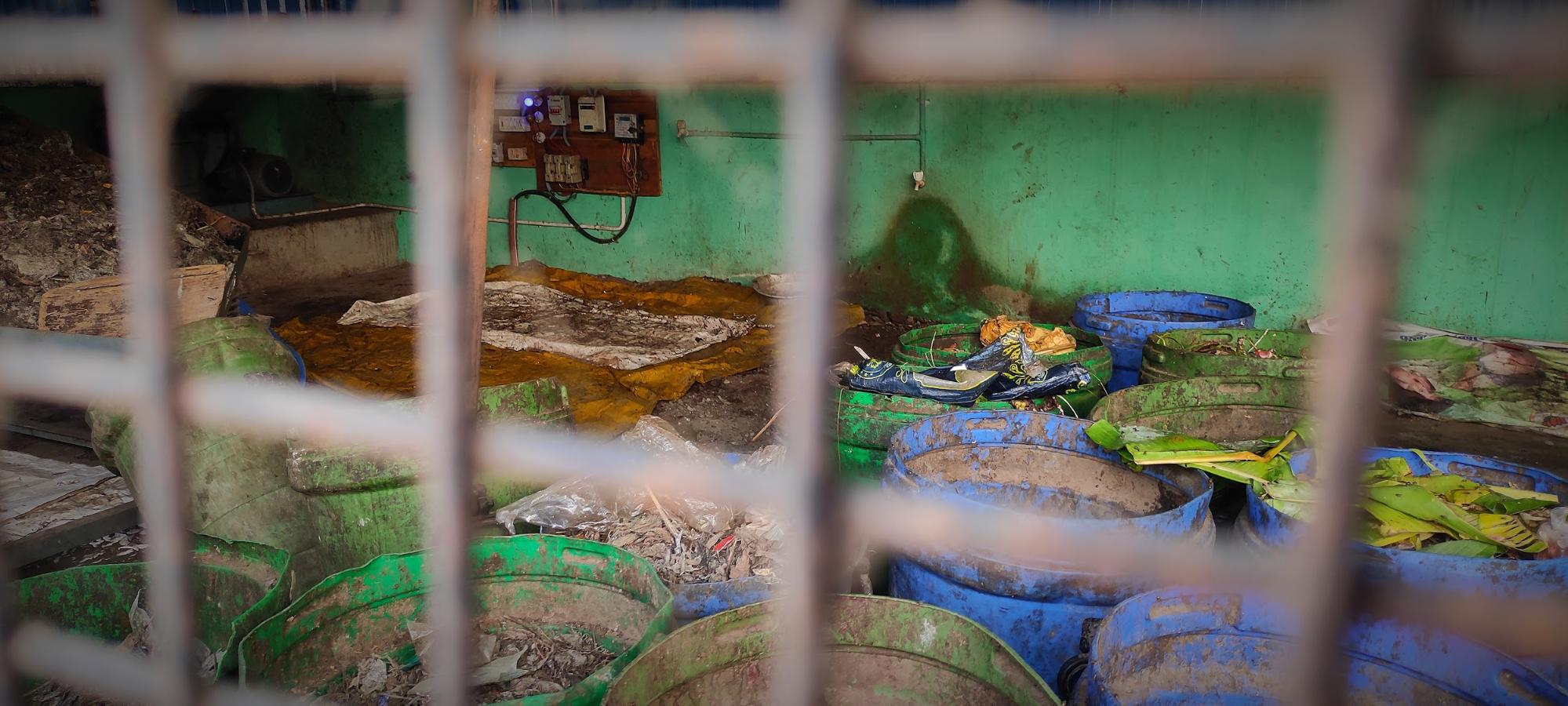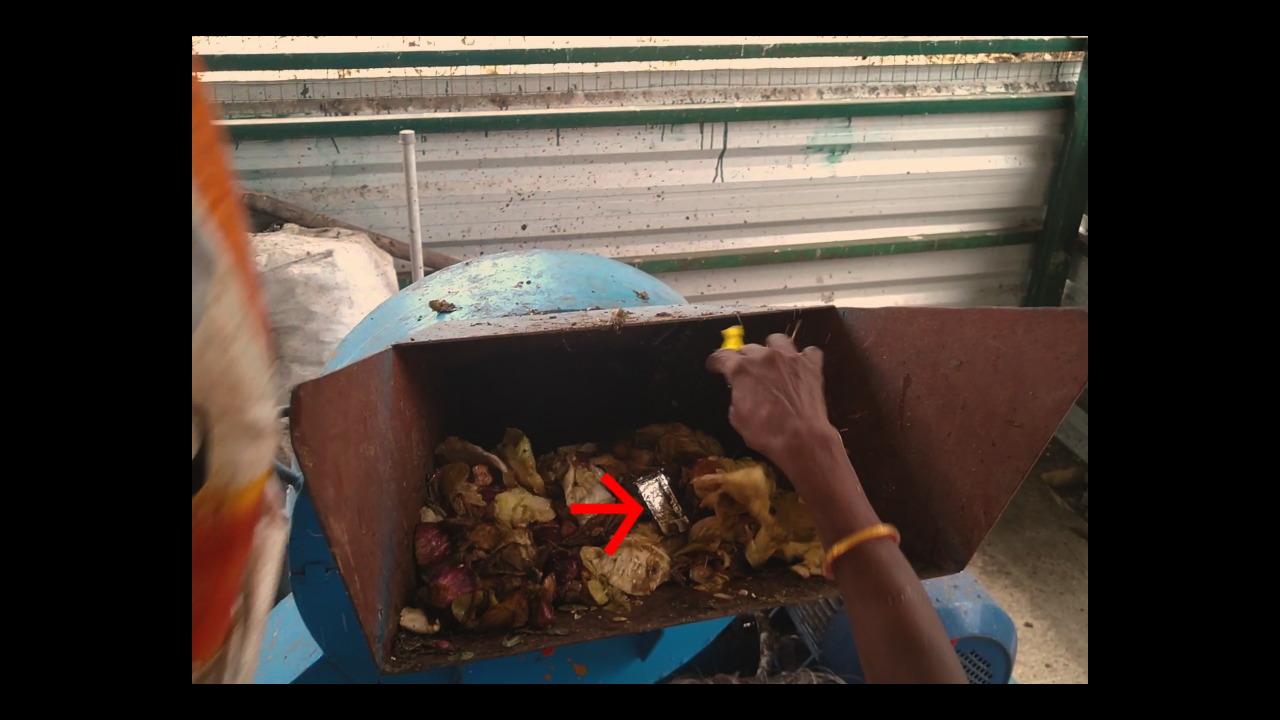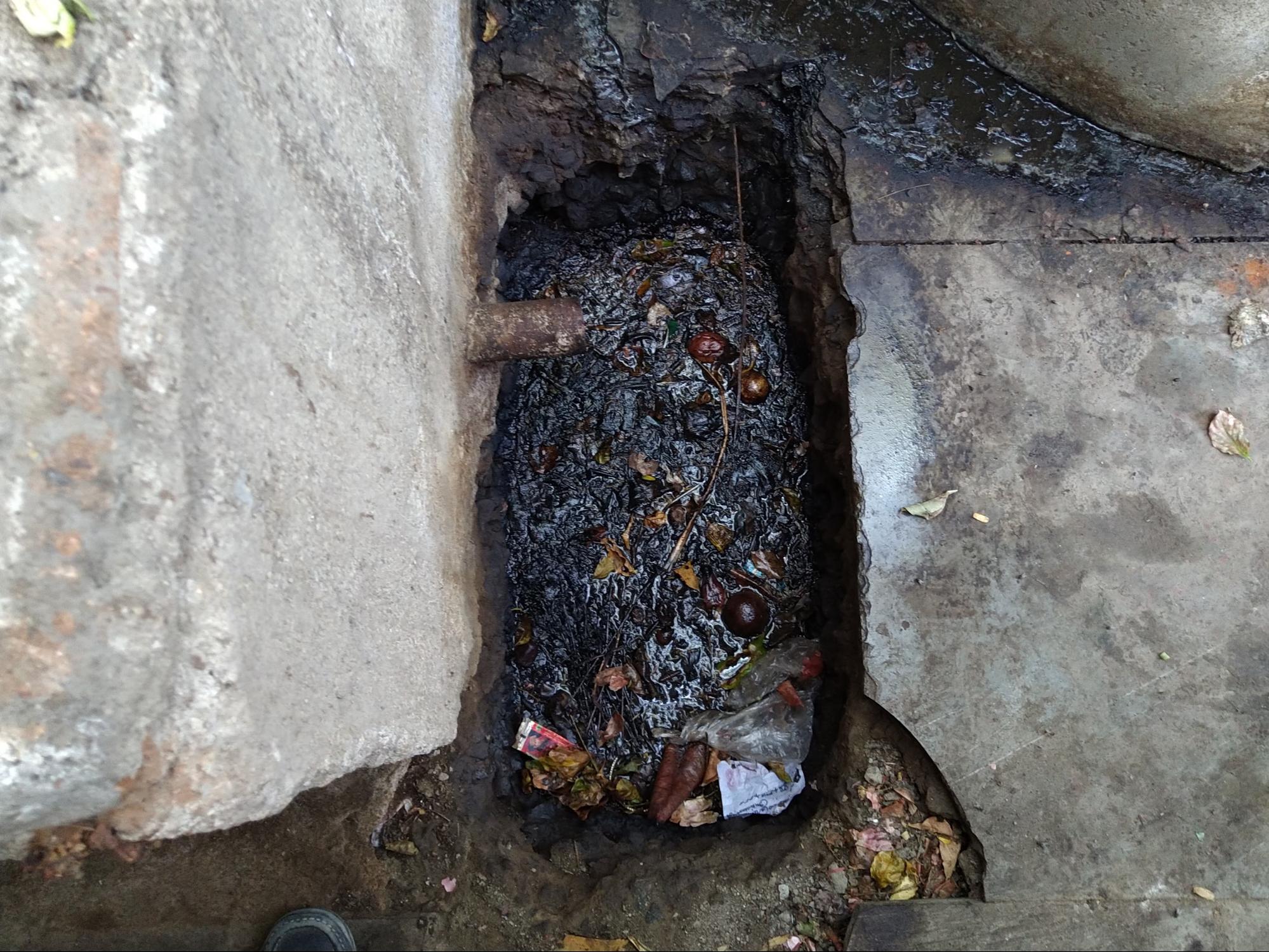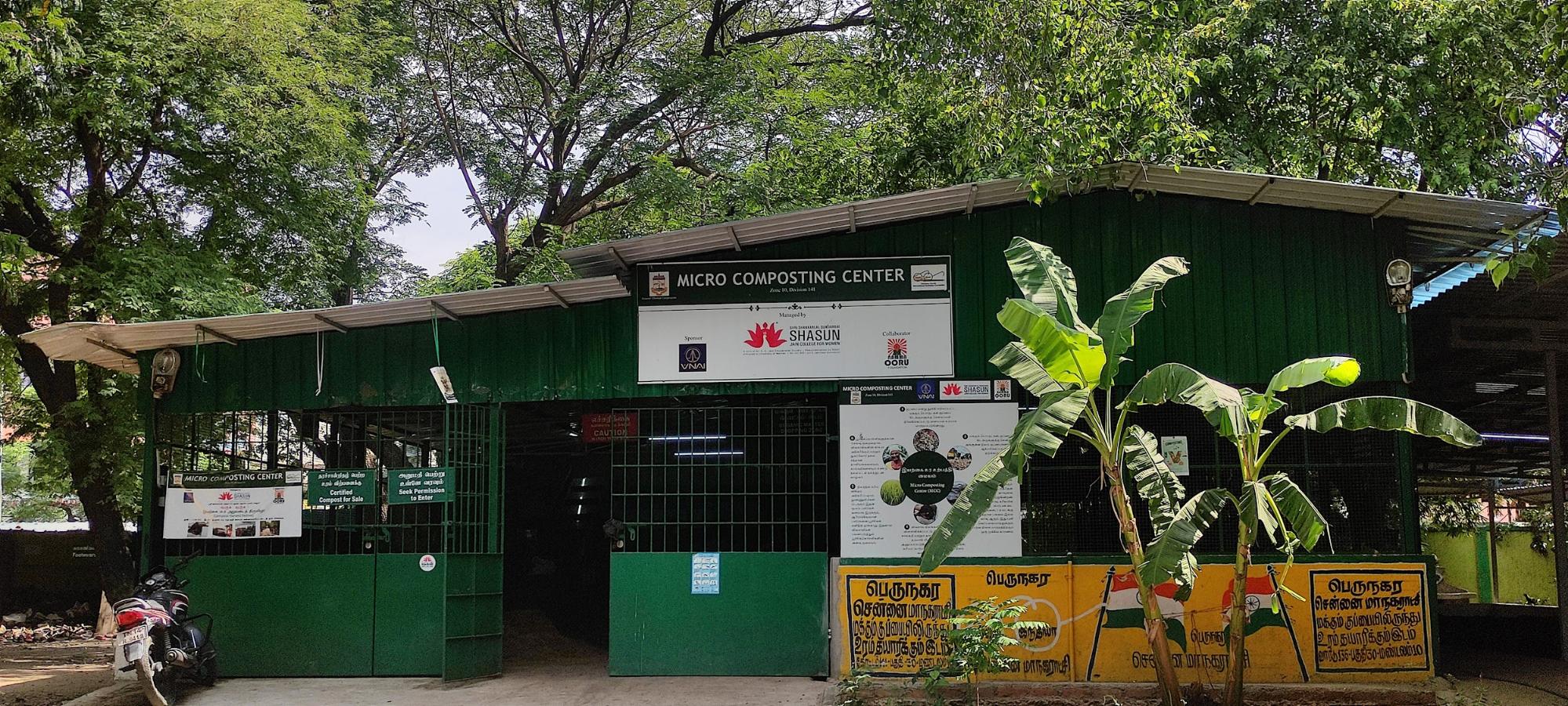Nearly 60 percent of municipal waste generated in Chennai is biodegradable waste (See this article for more on Chennai's solid waste management woes) ; this itself shows that half of the city’s solid waste problem can be solved if our biodegradable waste is managed effectively. The different methods we have to treat biodegradable waste are composting, biogas and bio-CNG generation. Biogas is created when organic matter is broken down in the absence of oxygen with the help of microorganisms, producing a gas which is a mixture of methane and carbon dioxide. This renewable fuel is used for cooking in Amma canteens in Chennai. If biogas is further processed, purified and compressed, it becomes bio-compressed natural gas (bio-CNG), a cleaner and greener form of energy with a high calorific value that can be easily replaced as an alternative green fuel in the transport and energy sectors.
Composting is perhaps the simplest method - needing low investments even when done commercially. Home kitchens are the source of much of the organic waste that reaches our landfills. The easiest place to handle this waste is therefore in people’s homes itself. Home composting needs no investment at all, and very little effort; and in return for this, the household gets nutrient rich manure that can feed a kitchen garden.
Until such a time as home composting becomes the norm, the Greater Chennai Corporation operates dedicated centers called Micro-composting Centres where our biodegradable waste is converted into manure through the process of composting. The whole process roughly takes two months. The manure thus obtained is sold as soil feed to be used in gardens and agricultural lands. In a day, 142.37 metric tonnes of biodegradable waste is composted through Chennai’s 136 MCCs; 3.20 and 8.94 metric tonnes per day are composted in vermicomposting and biogas plants, respectively. As the majority of Chennai’s biodegradable waste is composted in MCCs , it is important to understand how these work to be able to address their shortcomings.

Image 1: Accumulated bio-degradable waste kept in a micro composting center in Tondiarpet, ward 42 / CAG
I have been visiting MCCs around Chennai since 2019. There was a two year period in between when due to the pandemic the whole decentralized system was disrupted and most of the MCCs remained closed. But now as the world is rapidly returning to normalcy, waste generation is also slowly escalating (with the inevitable ‘return to business as usual’). And my recent visits to MCCs indicate that they are not quite keeping up. Take for instance the MCC in Tondiarpet. My most recent visit to it was in May 2022. It’s a site anybody can find, even without an address! Just the breath-holding stench is enough to identify it by. The cobwebbed mesh doors, the scattered waste mixed with the plastics all over the MCC, and a general sense of disorganization is what greets a visitor. This description is by no means unique to just the Tondiarpet MCC. Overall, you get the impression that these centers that are supposed to be solutions for our biodegradable waste have become sources of pollution themselves. This arises at the different levels of waste management, which we will see below:
Segregation: This is the first step in the process of waste management with multifold benefits. As per Chennai Corporation’s by-laws it's every household’s duty to segregate waste into the following categories: biodegradable, non-biodegradable & domestic hazardous waste. Biodegradable waste gets composted (ideally at home); non-biodegradable waste gets recycled; and domestic hazardous waste recycled, co-processed/incinerated. Consistent segregation at source will ensure that only biodegradable waste (from those homes that are not yet composting) reaches the MCC and toxic pollutants (for example, plastic waste) is funneled into corresponding waste streams. Without source segregation, onsite waste management gets complicated and the burden of it falls on the shoulders of conservancy workers who now have to segregate our waste manually.
Source segregated waste can still contain plastic and other contaminants; conservancy workers therefore still have to carefully look through the waste to remove these. However, in many of the MCCs, small plastic wrappers (multilayered plastics such as chocolate wrappers etc) go unnoticed. I have noticed pieces of plastics & tiny plastic wrappers cooking inside the pits in many MCCs in Chennai.
Shredding : Once the segregated biodegradable waste reaches the MCCs, the next step is shredding the larger chunks of organic matter in the shredder machine to facilitate the composting process. If plastic waste has been missed during the segregation process, they get broken down further during shredding, making it almost impossible to be retrieved. These will then go on to contaminate the final product - the manure itself.

Image 2: Plastic wrappers found in the biodegradable waste shredder / CAG
Maintaining a good C:N ratio to avoid foul smell: There have been several cases of MCCs in the city being shut down due to residents complaining of foul smells emanating from the centers. Following the composting protocol can help keep foul smells away. Maintaining a carbon and nitrogen (C & N) ratio of 1:3 is essential to get the composting going at the right speed. If the ratio of carbon is too high, the process is slowed down too much. If the carbon ratio is too low the resulting compost will be an unformed, odorous pile. Patching one part of dry waste (for example, dry leaves, cocopeat, & tea dust) with three parts of organic waste will help keep the ratio right.
Effective Microorganisms (EM) Solution: Regularly turning the compost and sprinkling EM solution aids aeration and helps microorganisms thrive on the biodegradable waste. EM solution is used to boost the activity of microorganisms. While turning the compost a sprinkling of EM solution will also keep the compost cool. This helps create a healthy and steady breaking down process. The EM solution can also alter the C & N ratio; so this needs to be kept in mind while sprinkling the solution. Various ingredients and methods are followed to make EM solution across composting centers in Chennai, but widely it is a mixture made of jaggery and curd.
Treating the Leachate: A thick dark watery substance leaks through the heaps of biodegradable waste during the composting process. This is known as compost leachate. Most MCCs simply let this drain into the soil. Leachate draining into the soil can pollute the groundwater and soil, affecting plants, animals, and even humans. It needs to be captured and treated properly before release. Instead of simply draining the leachate, a leachate solution can be created by mixing ten parts of water to one part of leachate. . This then forms a healthy diet for garden plants and herbs. But this must be done only when the leachate is fresh and odour free. Otherwise, there is a high chance that the leachate can be contaminated with microorganisms and can in turn, go on to contaminate the food produce that it is fed to.

Image 3: Leachate drain directly connected to drainage / CAG
Diverse processes and diverse results
Maintaining a composting center is not easy. Visit any MCC and you will find dedicated conservancy workers working hard to manage our waste. However, each micro composting center follows different composting protocols. How the biodegradable waste is received and stored, how segregation is done, how often the compost is turned over, whether EM solutions are used or not, and how the correct C:N ratio is kept - all of these can vary widely across MCCs. The result is that the quality of manure also varies significantly across sites. A proper Standard Operating Procedure (SOP) should be drafted by the GCC based on sound, scientific principles and also by considering some of the pressing ground reality issues discussed here. A uniform composting protocol that is reviewed and revised periodically will make life easier for conservancy workers, with much better outcomes for those that live around these sites and for the environment.

Image 4: Ward 141 Composting center in Kannamapettai crematorium and burial Ground / CAG
Protocols can also be created studying those MCCs which can be held as examples of excellence. For example, the MCC in Ward 141 in Zone 10 in T.Nagar has a composting center which is maintained by a private player within the Kannamapettai burial & cremation ground. The odorless welcome which greets the visitor is in itself very pleasant and rare. This MCC also produces around 15,000 kgs of manure every month, which is sent to farmers. With the manure they produce, the workers are now setting up a garden.
This year, GCC has sold 5.85 lakh kg of manure worth Rs. 64 lakh. Though there remain flaws in the system which the GCC has to address (in collection, disposal, operation, and infrastructure) citizen contribution to a smooth composting process cannot be ignored. Each household must take up responsibility for source segregation of the waste they produce. Home composting must be the norm, rather than the exception. As responsible individuals we must also be a part of the solution and not the problem by making judicious purchases, reducing our waste, avoiding single-use plastics, and reusing as much as possible. At the same time, every multi layer plastic, single-use plastic, and other non-recyclable plastic manufacturer should be held accountable for their relentless production of plastic waste.. Through the lens of Extended Producer Responsibility, the Indian government should also scrutinize these companies' sustainability commitments. GCC should also plan more awareness strategies to reach every citizen of Chennai to achieve 100 percent source segregation. Chennai’s MCCs can be important solutions to at least half of our waste management problems.
Add new comment